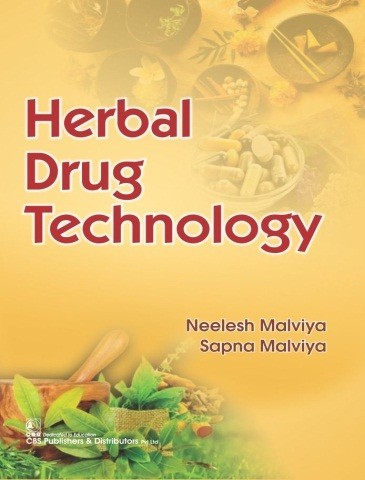Herbal Drug Technology (Pb 2024)
Neelesh Malviya MPharm (Hons), MBA (HR), PhD (Pharm Sci) is currently Principal and Professor, Smriti College of Pharmaceutical Education, Indore, MP. He obtained his BPharm, MPharm and PhD degrees from BR Nahata College of Pharmacy, Mandsaur, MP. His areas of research include phytochemistry and herbal drug development. He has published more than 45 papers in various reputed peer-reviewed national and international journals. He has authored Textbook of Pharmacognosy and Phytochemistry, co-authored two books, and contributed two chapters in the field of pharmaceutical sciences. He has guided 12 postgraduate and 20 graduate research projects to date, and is supervising 6 PhD and 6 postgraduate research projects. He is an honorary life member of IPA, APTI and Society of Ethnopharmacology. ... Read more Read less
Herbal medicine makes up an important component of the trend towards alternative medicine. Herbalism is one of the ancient historical traditions that use nature's by-products for curing diseases. Herbal medicine embodies study of botany using plant materials such as seeds, roots, leaves, bark, flowers, and oils for medicinal purposes. It is recognized by WHO as the second largest therapeutic system in use in the world. Some of the major drivers for the global herbal medicine market are rising in elderly population, growing consumer awareness on the use of herbal medicines, slight or no side effects, and the release of Current Good Manufacturing Practices (CGMP) for dietary supplements by the FDA. The book comprises five units. 1 Unit I is well laid out and sequentially explores relevant topics like herbs as raw materials, quality assurance in manufacture of herbal medicines and basic principles involved in Ayurveda, Siddha, Unani and homeopathy preparations, and standardization of Ayurvedic formulations, viz. aristas and asawas, ghutika, churna, lehya and bhasma. 2 Unit II provides a number of examples, general aspects, market, growth, scope and types of products available in nutraceuticals and study of herbal drug interactions and their possible side effects of hypercium, kava-kava, ginkobiloba, ginseng, garlic, pepper and ephedra. 3 Unit III focuses on herbal cosmetics, herbal excipients and conventional herbal formulations like syrups, mixtures and tablets and novel dosage forms like phytosomes. 4 Unit IV primarily deals with WHO and ICH guidelines for the assessment of herbal drugs, stability testing of herbal drugs, patenting and regulatory requirements of natural products and regulations in India (ASU DTAB, ASU DCC), regulation of manufacture of ASU drugs under Schedule Z of Drugs and Cosmetics Act. 5 Unit V gives the realistic taste of current art and industrial prespective of the herbal drugs industry, highlighting present scope and future prospects. A brief account of plantbased industries and institutions involved in work on medicinal and aromatic plants in India. The book provides components of GMP (Schedule T) and its objectives, infrastructural requirements, working space, storage area, machinery and equipment, standard operating procedures, health and hygiene, documentation and records.











